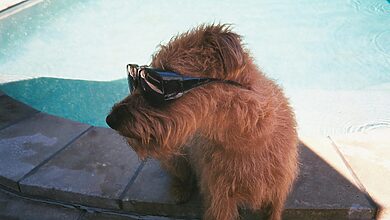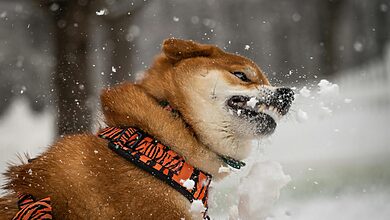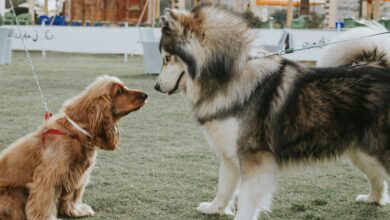Dog Walking in Harmony: Mastering Your Dog’s Outdoor Etiquette
Mastering your dog’s outdoor etiquette is an essential skill that every dog owner should master. A well-trained dog that walks calmly on a leash not only ensures their safety but also enhances the overall quality of life for both you and your furry friend. In this comprehensive guide, we’ll delve into the art of leash training, covering everything from the basics to advanced techniques. Whether you have a rambunctious puppy, an adult dog, or a senior companion, mastering the walk is within your reach.
Table of contents
Mastering Your Dog’s Outdoor Etiquette
Leash training goes beyond preventing your dog from pulling; it’s about creating a positive and enjoyable experience for both you and your canine companion. Let’s explore why leash training is crucial:
1. Safety First
A leash is your primary tool for keeping your dog safe in various environments. It prevents them from running into traffic, approaching aggressive animals, or getting into potentially harmful situations. Ensuring your dog’s safety is paramount.
2. Stress Reduction
Leash training helps reduce anxiety and stress in dogs. When your dog knows how to walk on a leash without pulling, they feel more secure and relaxed during walks. A calm and stress-free dog is a happier one.
3. Bonding and Socialization
Walking is an opportunity for you and your dog to bond, explore the world together, and meet other dogs and people. It’s a crucial aspect of socialization for puppies and a way for dogs of all ages to stay engaged with their surroundings.
4. Behavioral Benefits
Leash training reinforces good behavior and obedience. It sets clear boundaries and teaches your dog to follow your lead, enhancing their overall behavior. A well-trained dog is a joy to be around.
Tips for Successful Leash Training
Whether you’re starting with a curious puppy or working with an adult dog, these tips will help you master the art of leash training:
1. Choose the Right Equipment
Selecting the appropriate leash and harness or collar is the first step. Ensure the equipment you choose suits your dog’s size and breed. Avoid retractable leashes for training, as they encourage pulling.
2. Begin Indoors
Start leash training in a quiet, indoor environment free from distractions. This controlled setting helps your dog focus on the training process without external disturbances.
3. Gradual Introduction
Introduce the leash to your dog gradually. Allow them to sniff and explore it. Reward them with treats and praise for positive interactions with the leash. The goal is to make the leash a positive and non-threatening object.
4. Loose Leash Walking
Teach your dog to walk on a loose leash by stopping whenever they pull. When your dog pulls, come to a halt. Resume walking when the leash is slack. Reward and praise your dog when they walk without pulling. Consistency is key here.
5. Use Positive Reinforcement
Reward good behavior with treats and praise. Positive reinforcement encourages your dog to repeat the desired actions. Celebrate small wins during training sessions.
6. Consistency Is Key
Consistency is crucial in leash training. Use the same commands and reward system every time you walk your dog. This helps your dog understand what is expected of them.
7. Short and Frequent Walks
Short, frequent walks are more effective than long, infrequent ones. They allow your dog to practice walking on a leash without getting fatigued or distracted. Aim for several short walks throughout the day.
8. Advanced Training
Once your dog masters loose leash walking, you can introduce more advanced commands like “heel” for precise walking by your side. These commands enhance your dog’s walking skills and overall obedience.
Common Leash Training Mistakes to Avoid
To ensure a smooth leash training experience, steer clear of these common mistakes:
1. Using the Wrong Equipment
Choosing the wrong leash or collar can hinder progress. Select equipment that aligns with your dog’s size and temperament. Consult a professional if you’re unsure about the best choice.
2. Inconsistent Commands
Inconsistency in your commands can confuse your dog. Stick to the same cues and reward system throughout training. Consistency reinforces learning.
3. Punishment-Based Methods
Avoid punishment-based methods like yanking the leash or using choke collars. Such approaches can harm your dog physically and emotionally, leading to fear or aggression.
4. Skipping Socialization
Socialization is an essential part of leash training. Expose your dog to various environments, people, and animals to build their confidence and adaptability. A well-socialized dog is more comfortable during walks.
5. Rushing the Process
Leash training takes time. Don’t rush through the training steps; progress at your dog’s pace. Every dog is unique, and some may require more time to grasp certain concepts.
Mastering Your Dog’s Outdoor Etiquette
Leash training should be tailored to your dog’s individual needs, temperament, and age. Whether you have a high-energy puppy or a senior dog, adapting your training approach ensures success. Patience, consistency, and positive reinforcement remain your best allies throughout the training journey.
By mastering leash training, you’ll create a stronger bond with your dog, provide them with essential exercise and mental stimulation, and enjoy safe and pleasant walks together. Remember that the training process should be a positive and enjoyable experience for both you and your canine companion.








